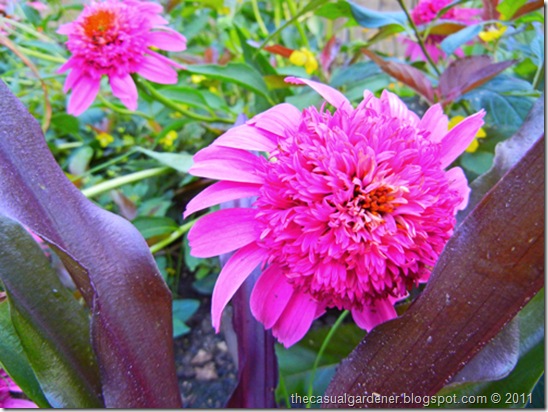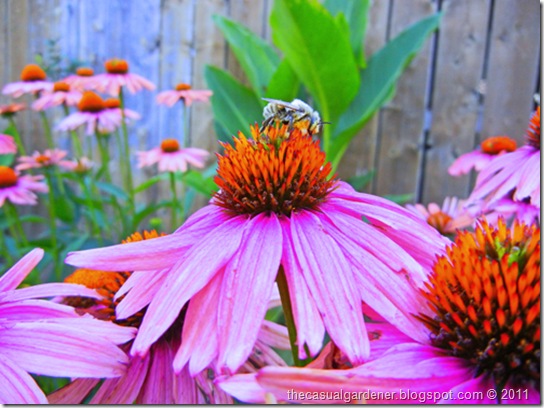How To Grow Echinacea (Coneflower); It Is EASY!
Amazing Echinacea
This year I had the most amazing Echinacea additions to my garden EVER. Mostly because I had to dig out 200 pounds of mint from my native prairie bed (no kidding) and replace the mint with well… ANYTHING other than mint. I chose Echinacea because my Illinois Goldfinches love to eat the cone seed in late summer and I absolutely adore the flowers (above you see Echinacea ‘Maui sunshine’).
Echinacea, also known as Coneflower, is easy to grow in Zones 4 to 9, blooming from summer to early fall, thriving in hot, dry, sunny spots. It does well in my zone 5 Illinois region in native plant beds with very little attention. Growing benefits of the Echinacea plant include: It loves humidity, attracts butterflies and birds, is a long lasting cut flower, has winter interest and it has a long bloom time of four weeks or more. Mine lasted from late July until nearly October this year. Echinacea like normal, clay, and acidic soils. My soil is alkaline and it does great in that too (below you see Echinacea ‘Mama Mia’).
While many books give complicated growing requirements for the Echinacea – I have found them super easy. Once planted I barely glance at the plant for maintenance reasons and leave the stems up all winter for winter interest and to help feed the native birds.
HOW TO GROW AN ECHINACEA:
- Dig a hole in a sunny spot.
- Place the Echinacea plant roots in the hole and cover with soil.
- Spit on it and/or vaguely water the first year. Ignore it for many years thereafter. It will “take” to your garden immediately.
- Divide in two or three years and spread the love.
Yep. I said spit on it. While it does need water and gets rained on regularly here in the Midwest, the Echinacea needs very little additional water beyond getting a kick start the first year. Seriously – this is as low maintenance plant as you will get next to a cactus. Plus they are beautiful when flowering. When they are not flowering they look like sticks, so partnering the plants with low growing native grasses or low growing leafy plants is a good idea for a fuller look in the landscape (below you see Echinacea ‘Gum drop’).
On a special note – you should be aware that all the Echinacea shown in the photos on this page flowered their first year – not bad for new plants.
Also, according to my good friend Lloyd Traven, they important secret for having Echinacea survive through the winter is no end-of-season cutting, “the absolute KEY [to long term Echinacia plant success] is to NOT cut them back right before winter!!!! The hollow stems will collect water and channel the rot right into the crown of the plant!” Leave your Echinacea up all winter and cut the dead parts out in the spring for best results.
Next time you get the urge to plant something beautiful and virtually care-free, choose the Echinacea, I think you will fall in love just like I have.
*Note — Because the FTC requires it, I am noting that Terra Nova Nurseries sponsored the Echinacea plants so I could test them. However, I would use these products even if they had not been sponsored.








I'm an echinacea freak and I can't get enough of all the new cultivars but I've had horrible luck getting them to live very long. I think the longest I've gotten out of any of them is 3 years, but often it's just 2. And I've certainly never had them grow with enough vigor that division was necessary (or possible). The native does great for me, but the new (and, in my opinion, much more fun) cultivars seem to burn out quickly.
I love all mine and keep adding more…I seeded some in the meadow too…they are so easy given the right conditions…
Shawna, the coneflower has long been my favorite (and easiest) plant to grow in the garden. I agree with Erin about the longevity of the newer cultivars; they just don't seem to have the fortitude that the older varieties have. But dang it! They're so gorgeous I just have to try them!
In my north Alabama garden (zone 7) I cut some of the plants back about a third in May. This delays some of the flowering so I have an extended grow time; often from May to early November.
May I also add another fantastic plant, this one for autumn blooming? The helianthus augustifolia is another favorite of mine. My grandmother dug hers from the roadside 20 years ago and she shared with me. It gets nearly 7 feet tall and blooms fantastic yellow flowers in September-October. I mix it with pineapple sage for a brilliant autumn display.
Once you're hooked, you're hooked. Thanks for the comments – we are echinacea lovers for sure! 🙂
Shawna
Somebody's been working! Beautiful.
Thank you!
One of my faves here in Texas, too, Shawna. Our native (E. purpurea) is super easy from seed, but I gotta get some of Dan's cuties, for sure!
Nice post. Good choice to replace the mint! Echinecea is a wonderful versatile plant-nice for the wild flower garden look.
Lloyd Traven was unable to post here, so asked that I leave this comment for you:
Lloyd says, “.Hey, Shawna, thanks for posting that really important tip. Personally, I am in love with these newer cultivars, and I urge folks to keep trying the newer ones that keep coming—the colors and forms are incredble, really revolutionary. The earlier 'new colors', like the Meadowbrite (?) have been totally surpassed in terms of hardiness and vigor. There is a new one that is only 6″ tall, and there is a great new series from seed called PowWow!! I still love the species one, too, especially for our avian friend's benefit!!”
THANKS Lloyd, for your lovely advice!
Shawna
I love echinacea. They are interesting flowers. I bought some seed this last year and tried started it in dome covered seed starter. Nothing grew. I tried a 2nd package of seed. Still no luck. Wouldn't the seeds be the same as the bulb/roots? Do you think they just put out bad seed this year?
http://cornallergyaid.blogspot.com/